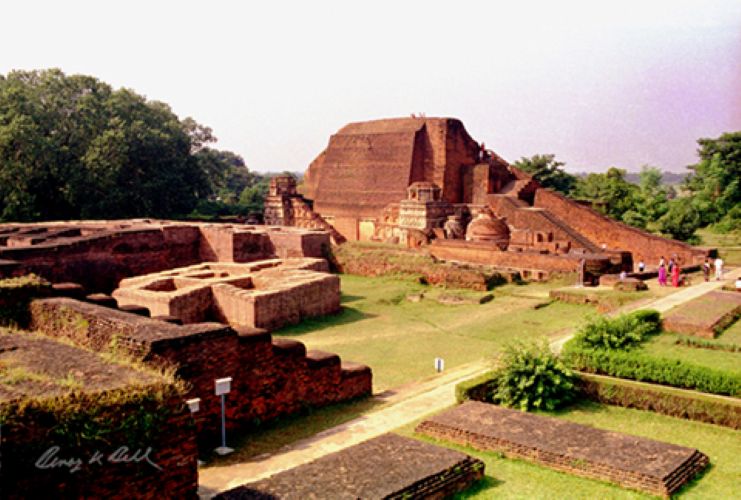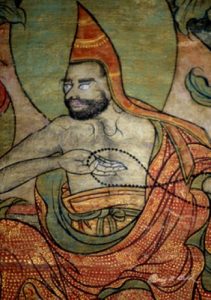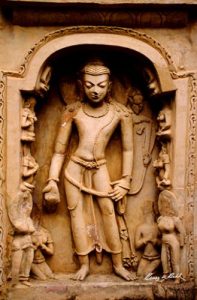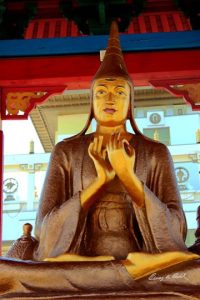Nalanda and the Indian roots of Tibetan Buddhism

Nalanda University, Bihar. Pic. Benoy K Behl
Benoy K Behl
At the ancient university of Nalanda, there was a spirit of vibrant intellectual thought, a climate of discussion and debate. The many ‘acharyas’, or learned professors, at Nalanda authored hundreds of works on philosophy, metaphysics, psychology, logic, medicine, astrology, arts, literature and other subjects.
The study at Nalanda was of life itself and what is reality. It was based not upon faith but on unshakable logic and pursuit of the truth. The study was of our minds, our perceptions and what is knowledge itself. The intellectuals here analysed the qualities which led to Enlightenment through knowledge and sought to create a logical path which could lead us to true and lasting knowledge: a path which would work for all. The medieval Tibetan historian Taranatha mentions that the great Buddhist philosopher Nagarjuna who was born in the middle of the 2nd century CE taught here.
Painting of Nagarjuna. Pic. Benoy K Behl
This was the first known, great university of the world. Nalanda was also at the apex of a consortium of universities which developed in ancient and early medieval times in South and South East Asia. It was from these ancient universities that concepts of rigorous and logical study finally spread to other parts of the world, leading to the founding of universities in Europe.
In the words of H. H. the Dalai Lama in the film: “When I meet an Indian, I always say you are traditionally our Guru. We are chela. You Indian our Guru. Then also I mention we Tibetans not only Indian Guru’s chela, but also quite reliable chela. That means, in Guru’s own land Buddha Dharma had lots of ups and downs. During these period, we your chela kept your knowledge intact, through centuries. So we are quite reliable chela.
The Art of Nalanda
Nalanda marks the beginning of the Pan-Indian medieval idiom in art. The perfected human form was created in Indian art by the 5th century CE, to help in meditation and to awaken the grace within us. At Nalanda, in the post-Gupta period, the focus came on the dynamism of the intellect, which analyses in acute detail the qualities which lead to nirvana. This is seen reflected in the vitality and sharp features of the stucco sculptures found at Nalanda. The figures have a greater stylization than in earlier Indian art.
Dinnaga, 17th century painting. Pic. Benoy K Behl
Angular and dynamic relief made in the plinth of stupas was a common feature during the Pala period. This is found beginning at Nalanda and spreading across Eastern India and Bangladesh, going up to Tripura, where it is seen in the remains of the Pilak stupa in Udaigiri District. The educational and cultural legacy of the Nalanda University is remarkable.
Famous Intellectuals of Nalanda
The most revered name in Mahayana Buddhist philosophy is that of Nagarjuna who was born in the middle of the 2nd century CE, in South India.
He was a luminary of the Nalanda University and he formalised the concept of Sunyata or ‘Emptiness’. The Madhyamika School of Buddhism, or ‘The Middle Path’, was created on the teachings of Nagarjuna.
Bodhisattva, Main Temple, Nalanda Site. Pic. Benoy K Behl
Dinnaga of the Nalanda University was born at Kanchipuram in South India. He lived in the 5th century and is known as the founder of the system of Buddhist Logic. He authored over a hundred treatises on the subject, most of which are still preserved in Chinese and Tibetan translations.
When Xuanzang visited Nalanda, he studied under the famed guru Dharmapala. The teacher was also known for having spread the knowledge of Buddhism in Indonesia.
One of the noted students of Dharmapala was the brilliant logician Dharmakirti. He lived in the 7th century and was born at Tirumalai in South India. Dharmakirti’s writings mark one of the highest points reached in speculative philosophy.
The learned Santaraksita of the Nalanda University founded the first monastic order in Tibet. He also modelled Samye, the first monastery of Tibet, on the Odantpuri Mahavihara in Eastern India. At his suggestion, the Tibetan king also invited Guru Padmasambhava, who was then teaching in the region of Kashmir at that time. Padmasambhava, who was also of the Nalanda University, went on to become the most revered person in the entire Himalayan and trans-Himalayan region, where he is known as the ‘The Second Buddha’. The Guru swept across the mountains, establishing Buddhism in Ladakh, Lahaul-Spiti, Kinnaur, Tibet, Bhutan and Arunachal Pradesh.
Atisa, Golden Abode of Shakiyamuni Temple.
Pic. Benoy K Behl
Atisa or Dipankara Srijnana (980-1054) was born in East Bengal, studied at Nalanda University and then became one of the leading teachers at the University of Vikramshila, also in Bihar. He was invited to Tibet by King Yeshe ’Od and he accepted his invitation at the age of 60, in CE 1040. He left Vikramshila and stayed in Tibet until his death. He consolidated the true knowledge of Buddhism in that land.
The film is shot extensively in Tibet, Kalmykia in European Russia, Ladakh, Spiti, Arunachal Pradesh, Nalanda, Bodhgaya, Sarnath and Karnataka. Benoy K Behl, world-famous Buddhist scholar, art-historian, film-maker, photographer and author, is the director and the narrator of this film.
Learn more about Nalanda in a talk by Benoy K Behl on April 16 (Wednesday), 6 pm at the Dr Fredie
and Mrs Keti Mehta Memorial Lecture, PR Gallery, organised by Chhatrapati ShivajiMaharaj Vastu Sangrahalaya in collaboration with Museum Society of Mumbai. A film ‘Indian
Roots of Tibetan Buddhism’ Behl made for MEA, Govt. of India will also be screened on the occasion





